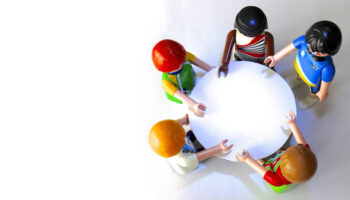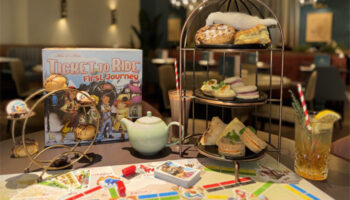Ethical innovation: Creating for children is not child’s play

I recently reached out to my network on Linkedin to ask: “When does playful learning become just learning?”
At Book of Beasties, we hold the overall wellbeing of the children and young people – who will use and hopefully benefit from our innovations – at the forefront of our minds and development processes.
One of our most significant challenges is to determine not just what is entertaining, but also what focuses the end user’s attention on the core topic at hand – which in our case is mental health – and how we can perfectly balance an enjoyment vs impact ratio.
Gary Pope, Co-Founder of marketing agency Kids Industries, responded to my question with: “If an experience is playful for the individual, then it will be educational for the individual.”
It got us thinking more about ‘Ethical Innovation’ or design for the benefit of society. As play has such a huge influence in terms of the development of a young person, then the pressure is truly on the creator to ensure a playful experience always shares a defined positive message.
An Advocacy Brief from the LEGO Foundation and Unicef states: “Scientific research over the past 30 years has taught us that the most important period of human development is from birth to eight years old. During these years, the development of cognitive skills, emotional well-being, social competence and sound physical and mental health builds a strong foundation for success well into the adult years.”
This highlights the responsibility that comes with developing content for children. It’s not just about creating something enjoyable and entertaining, but cultivating an experience that could influence that child for the rest of their life.
Back to my question, and play expert, toy designer and advisor to Book of Beasties, Yesim Kunter, commented: “Working on learning (educational) platforms taught me that ‘educating’ and play do not go well together as there is an underestimation of the players’ capacity to learn while playing… Design of the products should lead to suggestions rather than dictating their thought process.”
If this is true and there is a potential lack of understanding or a misjudgement of how a ‘player’ learns while playing, then this could possibly explain why playful learning hasn’t been more widely adopted so far.
With the learning content that is featured in Book of Beasties’ materials (which includes the discussion of mental wellness issues, how to identify them and exercises to practice that may help) we set the scene with a character (or Beastie) and a narrative, then base the playful experience off of that. This, as Yesim says, hints towards the educational elements and allows the child to naturally engage with it (without it being explicit).
The therapy of play, whether that is directive (guided play) or non-directive (free play), is largely about helping a child learn about ‘the self’ whilst exploring adaptive skills which offer insight into a child’s own consciousness, emotions and thought. This self-understanding can even be leveraged into positive changes in behaviour.
Pope went on to say: “Everything starts (and ends) with insight. Not just data points btw [sic]; truly, deeply, unquestionably understanding for whom we are designing that experience. Their developmental stage, engagement preferences, societal context, familial circumstances.”
Keeping this in mind throughout any development process is imperative due to the potential suggestive power a product, resource or experience could have on the end user. Through play, the child will tell us more about themselves, their likes and dislikes, situations, wants and needs – and it is the job of a creator, educator and innovator to listen and take note.
Katherine Mengardon, who is a play and creativity education consultant and a published author, added: “The biggest challenges are in keeping things as simple as possible, but also really keeping the user, the child, at the heart of the experience. And the only way to do that is to let them explode [sic] every idea we might have and show us the way.”
I then went on to ask: “What are the key successes and/or failings in developing playful learning experiences for children (and adults), and why?”
Jo Redfern, the Global Brand Director of the BAFTA-winning children’s content creator Sutikki, responded: “If you can create something that inspires wonder, that motivates curiosity or encourages expansive thinking then children will learn. It’s as much about how it’s delivered as the content itself.”
—
To stay in the loop with the latest news, interviews and features from the world of toy and game design, sign up to our weekly newsletter here

























